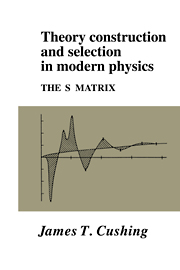Book contents
- Frontmatter
- Contents
- Preface
- Acknowledgments
- 1 Introduction and background
- 2 Origin of the S matrix: Heisenberg's program as a background to dispersion theory
- 3 Dispersion relations
- 4 Another route to a theory based on analytic reaction amplitudes
- 5 The analytic S matrix
- 6 The bootstrap and Regge poles
- 7 An autonomous S-matrix program
- 8 The duality program
- 9 ‘Data’ for a methodological study
- 10 Methodological lessons
- Appendix
- Notes
- References
- Glossary of technical terms (from physics and from philosophy)
- Some key figures and their positions
- Index
2 - Origin of the S matrix: Heisenberg's program as a background to dispersion theory
Published online by Cambridge University Press: 05 June 2012
- Frontmatter
- Contents
- Preface
- Acknowledgments
- 1 Introduction and background
- 2 Origin of the S matrix: Heisenberg's program as a background to dispersion theory
- 3 Dispersion relations
- 4 Another route to a theory based on analytic reaction amplitudes
- 5 The analytic S matrix
- 6 The bootstrap and Regge poles
- 7 An autonomous S-matrix program
- 8 The duality program
- 9 ‘Data’ for a methodological study
- 10 Methodological lessons
- Appendix
- Notes
- References
- Glossary of technical terms (from physics and from philosophy)
- Some key figures and their positions
- Index
Summary
A common perception of Heisenberg's S-matrix program of the 1940s is that it encountered difficulties quite early on and then quickly died out. One can easily get the impression that the original Heisenberg program was irrelevant for the theoretical developments that provided the background out of which the dispersion-theory and later S-matrix theory program emerged. In this chapter we wish to show that Heisenberg's original program posed a set of questions the criticism of and response to which led to the dispersion-theory program of Goldenberger and Gell-Mann. It is not our purpose to review all of the elementary particle physics of the 1950s, or even all of what today, in retrospect, is judged to have been the ‘best’ or most important physics of that period.
In correspondence or in direct conversations, Geoffrey Chew, Marvin Goldberger, and Murray Gell-Mann all recall that Heisenberg's old S-matrix program had essentially no direct influence on their own work which led to the dispersion-theory and S-matrix theory programs of the late 1950s and of the 1960s. All had known of Heisenberg's general ideas from some lectures given at the University of Chicago by Gregor Wentzel or possibly from reading Heisenberg's papers. It was only later that they became aware of any relevance of their work to Heisenberg's S-matrix program.
We begin by reviewing Heisenberg's program (Cushing, 1982,1986a; Grythe, 1982; Oehme, 1989; Rechenberg, 1989) and the considerable theoretical activity related to it during the period from the mid-1940s to the early 1950s.
- Type
- Chapter
- Information
- Theory Construction and Selection in Modern PhysicsThe S Matrix, pp. 28 - 66Publisher: Cambridge University PressPrint publication year: 1990



